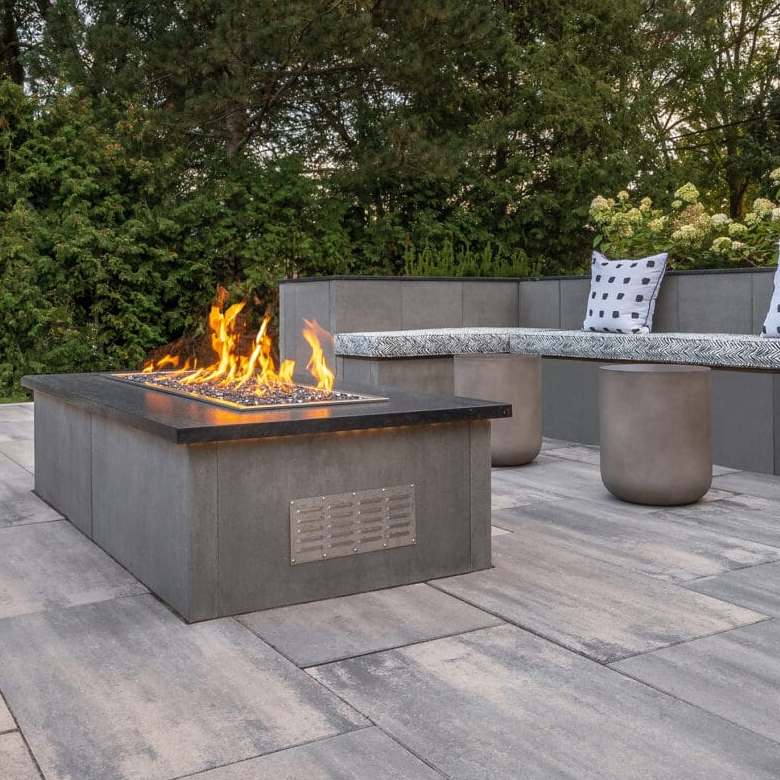Elevate Your Vision, Build Your Reality
Our General Contracting Services Bring Your Dream Space to Life.

More than
25 years of experience

Elevating Residential Spaces Through Expert Renovations.


Home Renovation: A home renovation encompasses the modification, restoration, or transformation of a standalone house. It can range from minor updates to extensive overhauls. Home renovations can focus on various aspects, such as:
-
Interior Spaces: This includes remodeling kitchens, bathrooms, bedrooms, living rooms, and any other interior areas. Upgrades may involve changing layouts, adding new fixtures, replacing flooring, and updating finishes.
-
Exterior Improvements: Home exteriors can be enhanced through changes to the facade, landscaping, roofing, siding, windows, and doors. These improvements can improve curb appeal and increase the property's value.
-
Structural Modifications: Some renovations involve altering the structural components of a home, such as removing or adding walls, creating new openings, or expanding rooms.
-
Energy Efficiency: Renovations can include energy-efficient upgrades like installing new insulation, windows, or HVAC systems to reduce energy consumption and lower utility bills.
-
Smart Home Integration: Many modern home renovations incorporate smart technology, such as smart thermostats, lighting systems, security cameras, and home automation.
Apartment Renovation: Apartment renovations involve the refurbishment or modification of units within multi-unit residential buildings. These projects are carried out to enhance the living experience for tenants, increase rental value, or attract new occupants. Apartment renovations often include:
-
Space Optimization: Making efficient use of limited space is a priority in apartment renovations. This might involve open-concept layouts, multi-purpose furniture, and creative storage solutions.
-
Aesthetic Upgrades: Apartments are refreshed with new paint, flooring, fixtures, and finishes to provide a modern and appealing look.
-
Kitchen and Bathroom Improvements: These areas are frequently renovated to meet contemporary standards and trends, offering updated appliances, countertops, cabinetry, and bathroom fixtures.
-
Lighting and Ventilation: Upgrading lighting fixtures and improving ventilation systems can enhance comfort and ambience.
-
Safety and Compliance: Apartment renovations often include ensuring compliance with building codes, safety regulations, and accessibility standards.
Both home and apartment renovations are driven by the desire to create more functional, comfortable, and visually appealing living spaces. They also offer opportunities to incorporate sustainable practices, modern technology, and design trends that align with the preferences and lifestyle of the property owners or occupants. Whether it's a single-family home or an apartment within a larger complex, these renovations aim to transform spaces into environments that meet the needs and aspirations of the people who live in them.
Home Hardscaping: Home hardscaping refers to the design, installation, and incorporation of non-living elements into the outdoor areas of a residential property. These elements are typically durable and contribute to the overall functionality, aesthetics, and structure of the outdoor space. Home hardscaping can include features such as:
-
Patios and Decks: Creating paved areas or wooden platforms where residents can relax, entertain, or dine outdoors.
-
Pathways and Walkways: Constructing walkable paths that connect different parts of the property, offering functional access and enhancing the landscape design.
-
Retaining Walls: Building walls that help control erosion, create terraced levels, or define different areas within the landscape.
-
Driveways: Installing paved surfaces that lead to the garage or parking area, providing a stable surface for vehicles.
-
Outdoor Kitchens and Fireplaces: Incorporating permanent cooking areas or fire features into the outdoor space for extended usability.
-
Water Features: Including elements like fountains, ponds, or waterfalls to add visual interest and soothing sounds.
-
Gazebos and Pergolas: Constructing structures that provide shade, architectural interest, and a space for outdoor gatherings.
-
Outdoor Seating and Benches: Installing seating areas that blend with the landscape, encouraging relaxation and enjoyment of the surroundings.
Building Hardscaping: Building hardscaping refers to the integration of non-living elements into the design and layout of larger structures, such as commercial or residential buildings. These elements contribute to the functionality, safety, and overall design of the building environment. Building hardscaping can include features such as:
-
Entrance Features: Designing impressive entrance areas with features like grand staircases, entry plazas, and decorative paving.
-
Plazas and Courtyards: Creating outdoor gathering spaces within the building complex, often adorned with seating, landscaping, and artistic elements.
-
Terraces and Rooftop Gardens: Utilizing flat roof spaces to create green areas or outdoor extensions for residents or occupants.
-
Parking Structures: Designing parking areas that are not only functional but also aesthetically pleasing, integrating materials and landscaping.
-
Pedestrian Walkways: Constructing pathways that allow safe and convenient movement between different parts of the building complex.
-
Outdoor Amenity Areas: Including recreational spaces like pool decks, fitness areas, and relaxation zones for residents or occupants.
-
Seating and Outdoor Furniture: Adding seating areas and outdoor furniture that enhance the usability and comfort of outdoor spaces.
Both home and building hardscaping play a crucial role in enhancing the visual appeal, usability, and value of the respective properties. These non-living elements are carefully designed and integrated to complement the surrounding environment, creating inviting and functional spaces that people can enjoy for various purposes.


Home Flooring Installation: Home flooring installation involves the process of adding new or replacement flooring materials to the interior spaces of a residential property. This installation not only serves functional purposes but also significantly impacts the aesthetics and ambiance of the living space. Here are some key points regarding home flooring installation:
-
Material Selection: Homeowners can choose from a wide range of flooring materials, including hardwood, laminate, tile, vinyl, carpet, and more. The choice of material depends on factors such as style preferences, durability requirements, and budget considerations.
-
Preparation: Prior to installation, the existing flooring might need to be removed, and the subfloor prepared to ensure a smooth and even surface. This step is crucial to prevent issues with the new flooring's appearance and longevity.
-
Installation Process: The installation process varies based on the chosen flooring material. For example, hardwood flooring involves fitting and securing individual planks, while tile installation requires precise placement and grouting. Carpet installation involves stretching and securing the carpet over a pad.
-
Adhesive and Fastening: Depending on the material, adhesive, nails, staples, or other fastening methods might be used to secure the flooring in place.
-
Finishing Touches: After installation, additional steps such as sanding, sealing, and applying finishes may be necessary to enhance the appearance and durability of the flooring.
-
Professional vs. DIY: While some homeowners choose to install flooring themselves, professional installation is often recommended, especially for more complex materials like tile or hardwood, to ensure a flawless result.
Building Flooring Installation: Building flooring installation pertains to the process of adding or replacing flooring within larger structures, such as commercial buildings, office spaces, and public facilities. This installation serves both functional and aesthetic purposes, creating a comfortable and attractive environment. Here are some important aspects of building flooring installation:
-
Usage Considerations: The type of flooring selected for a building depends on its purpose. For example, commercial spaces may require more durable flooring to withstand heavy foot traffic, while office spaces might prioritize aesthetics and comfort.
-
Material Diversity: Just like in homes, a variety of flooring materials are available for building installations, including carpet tiles, vinyl, hardwood, laminate, concrete, and specialized flooring for specific industries (e.g., healthcare or hospitality).
-
Durability and Maintenance: Building flooring often needs to withstand more wear and tear than residential flooring. Therefore, choosing durable materials and proper maintenance strategies is essential to ensure longevity.
-
Installation Process: Similar to home flooring, building flooring installation involves preparing the subfloor, ensuring proper alignment and fit, using appropriate adhesives or fasteners, and finishing the installation according to the chosen material.
-
Regulations and Standards: Commercial buildings need to adhere to safety and accessibility regulations, which might influence the choice of flooring and its installation method.
-
Professional Installation: Given the complexity and potential scale of building installations, hiring professional contractors with experience in commercial flooring is advisable to achieve high-quality results.
In both home and building contexts, flooring installation is a crucial step that contributes to the overall look, functionality, and value of the space. Proper installation ensures that the flooring not only looks appealing but also stands up to daily use and maintains its quality over time.
Home Handyman Services: Home handyman services involve the provision of a wide range of repair, maintenance, and small improvement tasks within residential properties. These services are aimed at addressing various issues that homeowners might encounter, ranging from minor repairs to general maintenance tasks. Here are some key aspects of home handyman services:
-
Repair and Maintenance: Home handyman services encompass tasks such as fixing leaky faucets, repairing squeaky doors, patching up drywall, and addressing electrical or plumbing issues.
-
Carpentry: Handymen can perform small carpentry tasks like installing shelves, repairing furniture, hanging pictures, and assembling flat-pack furniture.
-
Painting and Touch-Ups: They can help with painting touch-ups, minor wall repairs, and other cosmetic improvements that don't require extensive renovations.
-
Minor Electrical Work: Handymen can handle tasks like replacing light fixtures, installing ceiling fans, and addressing simple electrical issues.
-
Minor Plumbing Work: They can fix minor plumbing problems such as unclogging drains, fixing leaky pipes, and replacing faucets.
-
Home Safety: Handymen can assist in installing smoke detectors, carbon monoxide detectors, and safety railings.
-
Door and Window Repairs: They can address issues with doors and windows, such as fixing hinges, locks, and frames.
-
Home Upgrades: While not typically involved in major renovations, handymen can help with smaller upgrades like adding crown molding, installing backsplashes, and enhancing curb appeal.
Building Handyman Services: Building handyman services extend the concept of residential handyman services to larger-scale structures such as commercial buildings, offices, and public facilities. These services are designed to address maintenance needs, repairs, and improvements within these spaces. Here are some key points regarding building handyman services:
-
Commercial Maintenance: Building handymen can handle routine maintenance tasks for commercial properties, ensuring that the building's systems, fixtures, and facilities are in good working condition.
-
Office Repairs: They can address issues within office spaces, including repairing office furniture, fixing lighting fixtures, and ensuring the overall functionality of work environments.
-
Facility Upkeep: Building handymen can handle maintenance tasks in public facilities such as restrooms, waiting areas, and common spaces.
-
Safety and Compliance: They can assist in ensuring that buildings meet safety standards, such as installing handrails, maintaining fire exits, and addressing any potential hazards.
-
Tenant Improvements: In commercial spaces, building handymen can help with minor tenant improvements, such as rearranging office layouts, installing partitions, and making small modifications to suit tenant needs.
-
Property Management: For property managers, building handymen can be valuable assets for addressing maintenance requests from tenants, handling routine inspections, and ensuring the overall well-being of the property.
Both home and building handyman services play an important role in maintaining the functionality and appearance of properties. While home handyman services focus on individual homeowners and their residential needs, building handyman services cater to larger structures and address the unique requirements of commercial and public spaces. In both cases, skilled handymen contribute to the overall safety, comfort, and functionality of the spaces they work in.

Ox2 Net Corp.
- 11215 Williams Rd, Richmond, BC V7A 1J2
